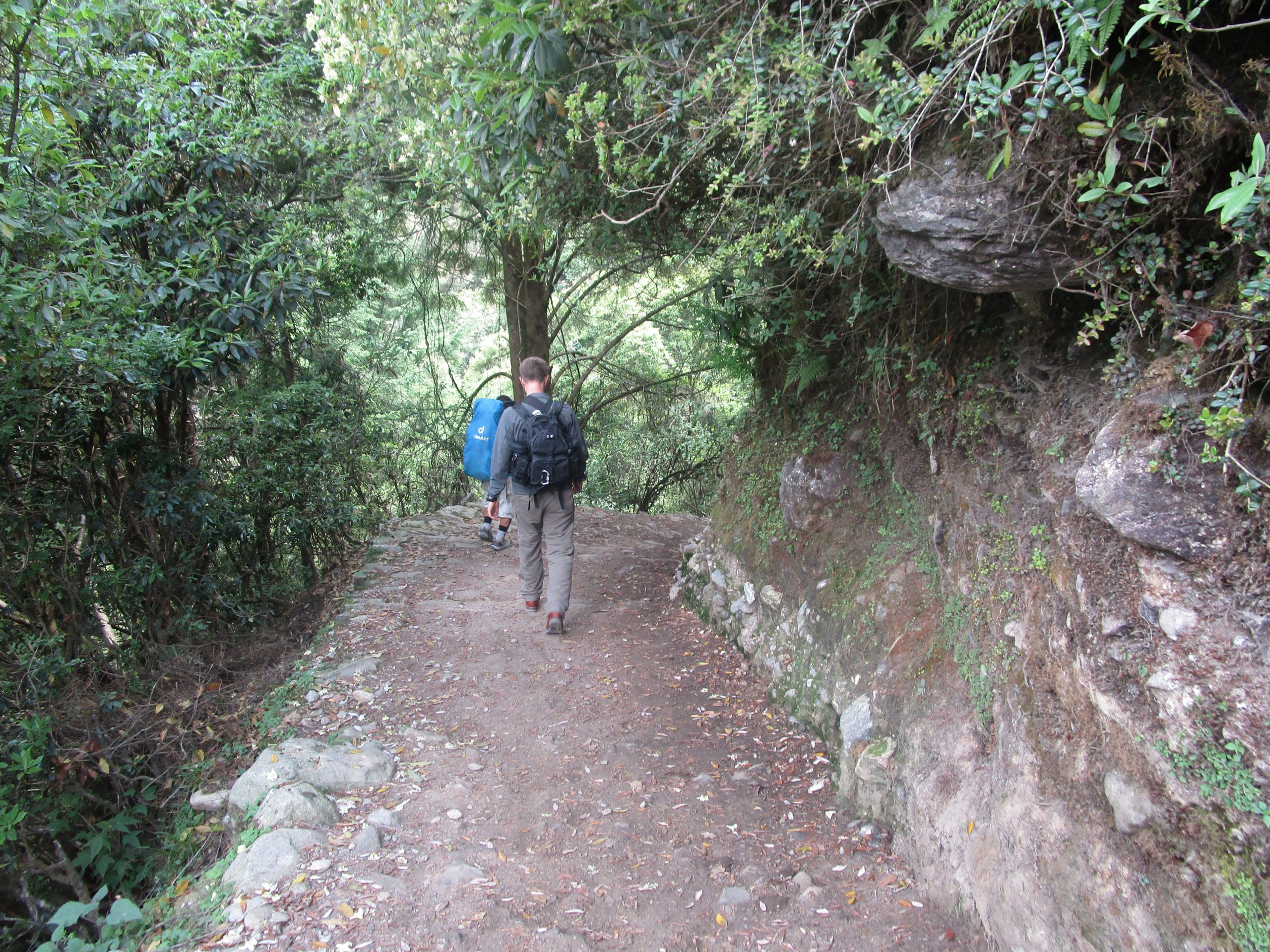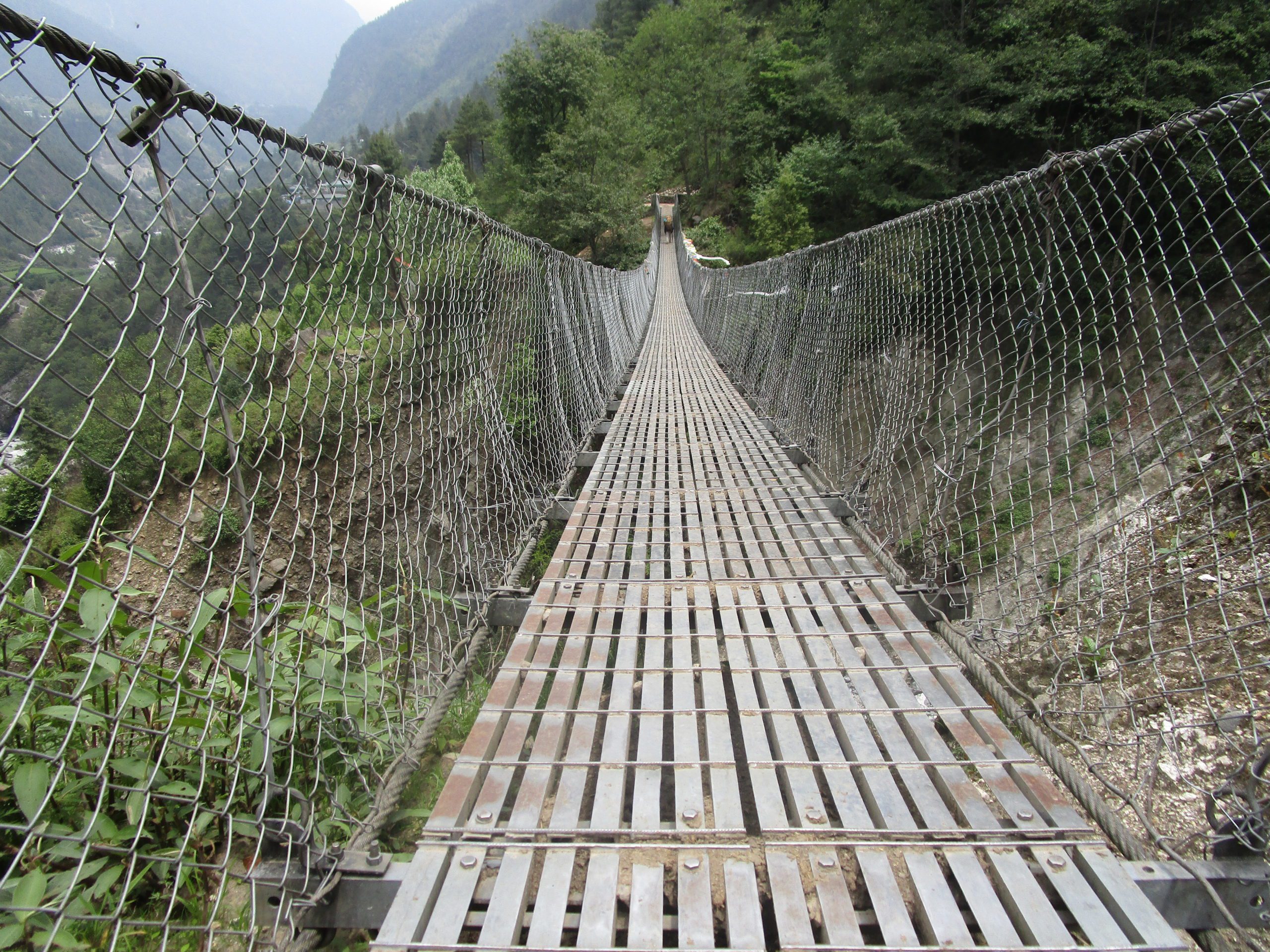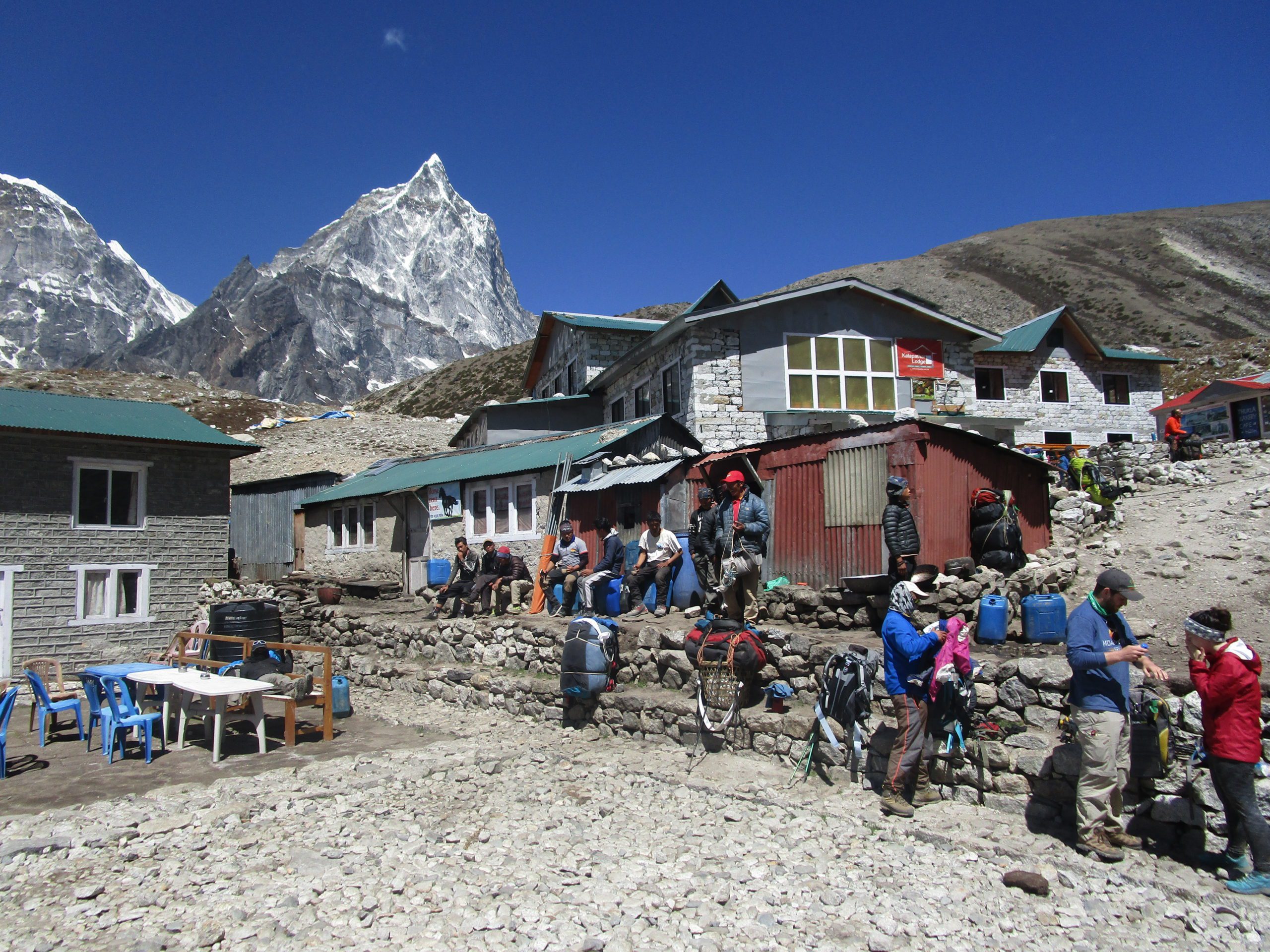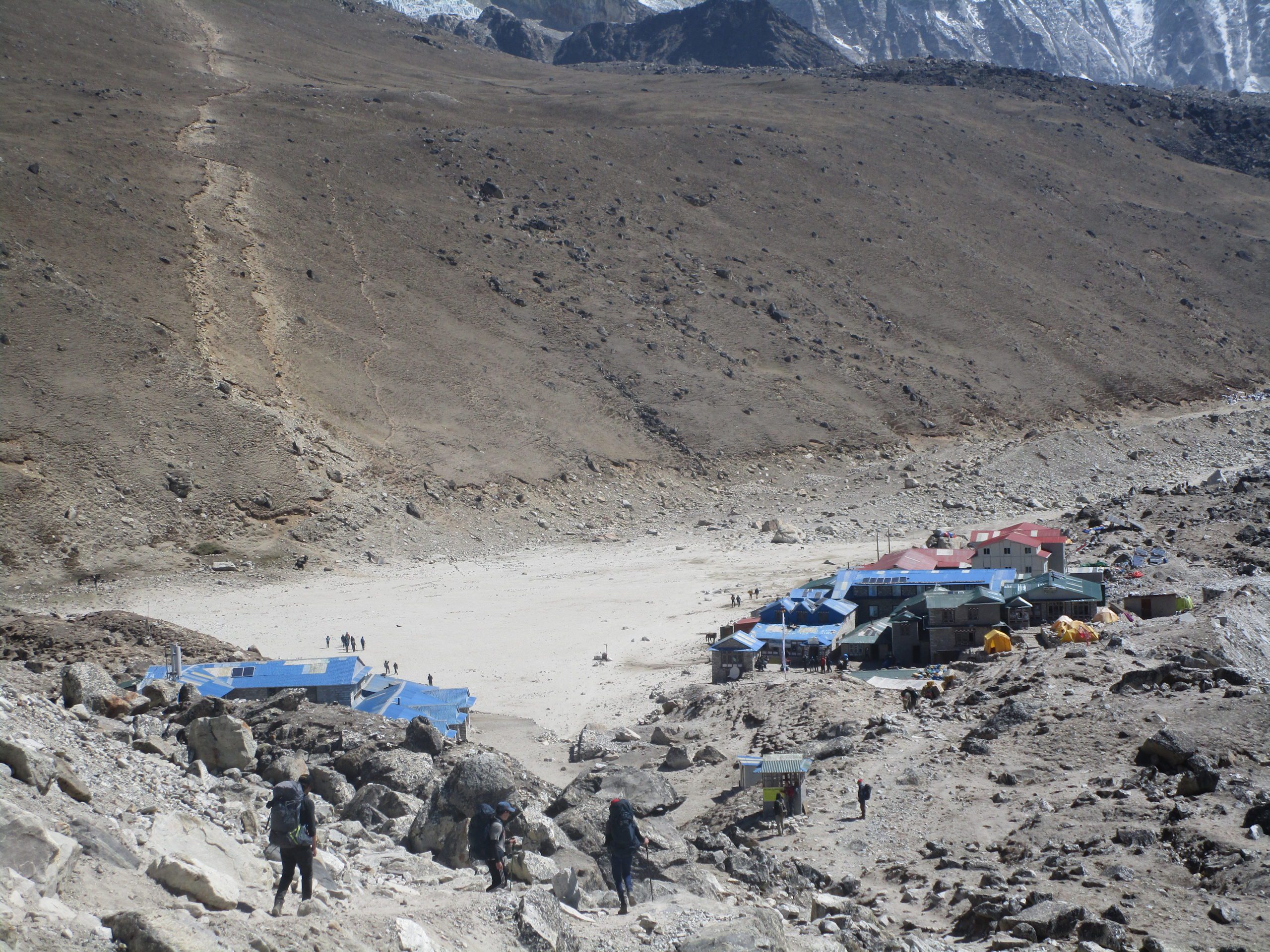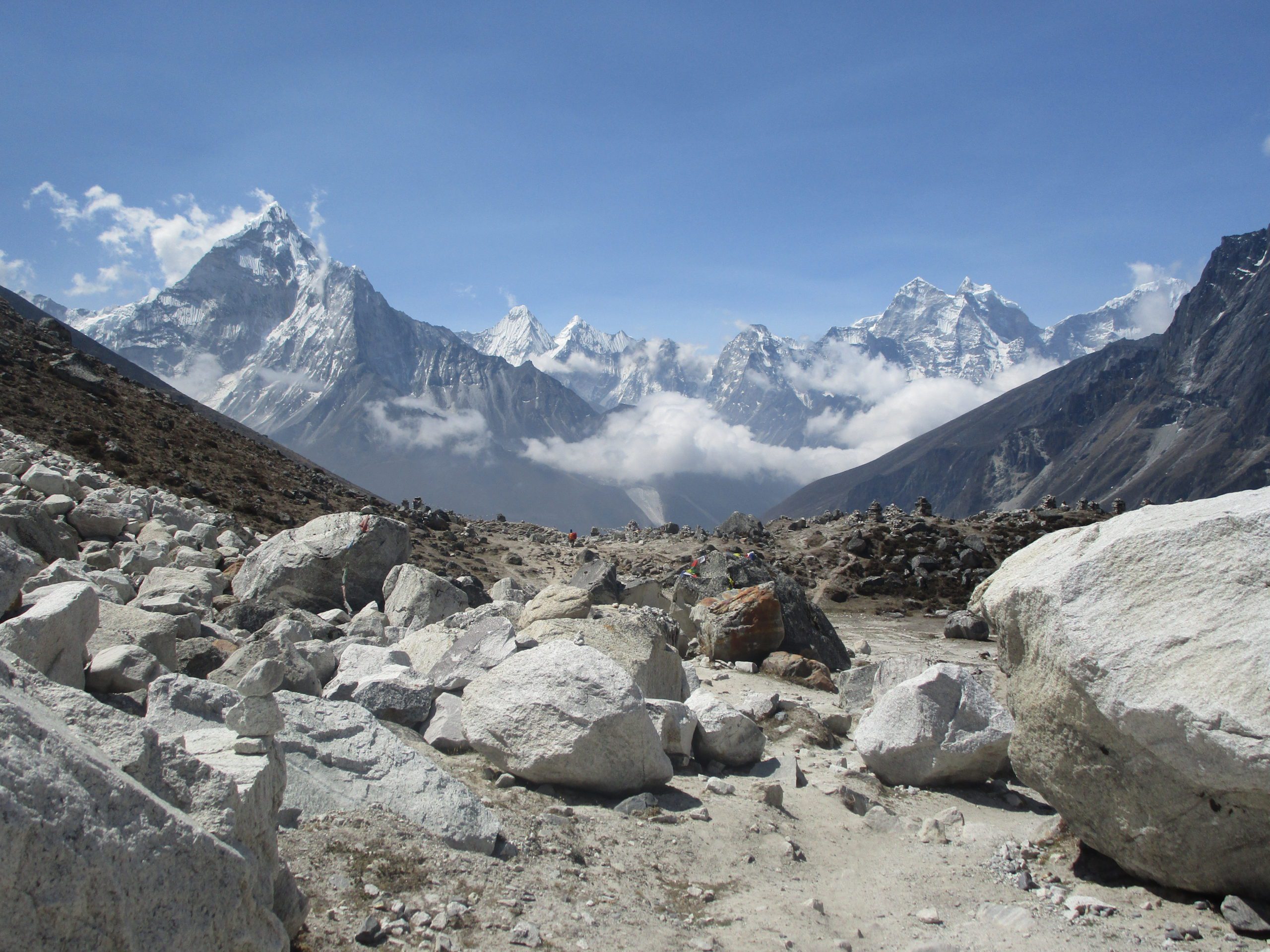Are you new to the world of hiking and feeling unsure about where to start? Worried about getting lost hiking or not having the proper hiking skills to participate? Hiking offers an incredible opportunity to immerse yourself in nature, escape the crowds, and disconnect from technology. However, embarking on this journey as a beginner can be overwhelming.
With considerations such as acquiring the right gear, choosing suitable trails, finding hiking companions, understanding wildlife, and ensuring trail safety, it’s natural to feel a bit intimidated.
To alleviate any confusion and provide you with practical guidance, we have compiled a straightforward and no-nonsense hiking guide specifically tailored for beginners. In this guide, we will teach you how to discover and prepare for hikes, select appropriate gear and attire, and prioritize both your well-being and the preservation of our cherished local parks to international trails during your hiking adventures.
By the time you reach the end of this comprehensive guide, you will gain the confidence to conquer any trail and fully embrace the wonders of the outdoors. We go through every step of the journey and provide the best hiking tips to help you in your next hiking adventure.
Table of Contents
What is Hiking?
Benefits of Hiking
Types of Hikes
Tips for Choosing the Right Hiking Trail
Understanding the Right Hike
Understanding Elevation Gain 🏔️
Where to Find Hikes?
Where to Find Hiking Buddies?
What to Wear For Hiking
Top Ten Essentials For Hiking
Post Hike Care
Trail Etiquette and Clean Earth Initiative
Time to Hike?
What is Hiking?
Let’s begin our exploration of becoming an adept hiker by establishing a clear understanding of what hiking entails.
Hiking, in essence, refers to the activity of embarking on long walks, particularly in natural environments such as the countryside or woodlands. Essentially, any walk that deviates from roads or sidewalks and takes place in a non-urban setting can be considered a hike.
Hikes encompass a diverse range of experiences, varying in their characteristics and scale. To provide you with a comprehensive overview, here is a breakdown of the different types of hikes you might come across in conversations and discussions.
Benefits of Hiking
There are numerous reasons why hiking is such a wonderful activity:
-
Perfect Exercise: Hiking offers a versatile form of exercise that caters to all fitness levels. Whether you prefer leisurely walks around a lake or challenging multi-day treks through mountains, hiking provides a great cardio workout that engages your entire body without excessive strain, minimizing the risk of injury.
-
Appreciation for the Outdoors: Engaging in ethical adventures like hiking allows you to develop a deeper appreciation for the natural world. Spending time surrounded by nature helps cultivate a sense of gratitude and understanding for the environment.
-
Accessibility and Affordability: Hiking is accessible to everyone, regardless of age, fitness level, or financial means. Unlike other recreational activities, you don’t need to join a team, purchase memberships, adhere to specific schedules, or invest in expensive equipment. All you need is a natural setting and the desire to spend time outdoors. Hiking is an inclusive and cost-effective way to enjoy the outdoors.
-
Unplugging and Switching Off: Hiking provides an opportunity to disconnect from the digital world. By stowing away your phones, taking a break from social media, and leaving work emails behind, you can fully immerse yourself in the present moment and enjoy the tranquility of nature.
-
Positive Impact on Mental Health: Scientific studies have shown that hiking has significant mental health benefits. Immersing oneself in nature and disconnecting from daily stresses can enhance overall well-being and foster a stronger connection with the broader human community. In fact, hiking is even used as a therapeutic tool for treating mental health conditions such as depression. It is truly a winner when it comes to promoting mental well-being.
These are just a few of the many reasons why hiking is so great. Whether it’s for physical fitness, reconnecting with nature, or improving mental health, hiking offers a wealth of benefits that make it a truly rewarding and enjoyable activity.
Types of Hikes
There are several types of hikes to consider, each offering unique experiences and challenges. We are focusing on the most popular 3 types of hikes with an emphasis on the day hike.
-
Day Hiking: This is the most common form of hiking. Day hikes typically take place within a single day, ranging from short and quick 1-mile treks to longer, full-day journeys that can extend up to 12 hours.
-
Backpacking (or Trekking): Backpacking involves multi-day expeditions where you carry all necessary gear, including a tent, to spend nights immersed in nature. Backpacking trips can range from a single overnight stay to extended adventures lasting several months.
-
Thru-Hiking: Thru-hiking is a specific type of backpacking that involves embarking on long-distance journeys that span from one endpoint to another. Prominent examples include the Appalachian Trail and the Pacific Crest Trail. Thru-hikes are known for their extended duration and require careful planning and preparation.
Day hiking serves as an excellent starting point for outdoor adventures and allows you to develop fundamental skills and knowledge. Day hiking offers a gradual and manageable introduction to hiking, allowing you to explore and enjoy nature at a comfortable pace. It is also the most popular of the 3 types of hiking due to is easier ability to plan and execute. Hiking beginners in particular should consider starting with a short hike like what much of day hiking is. One of the biggest mistake beginners make, is biting off more than they bargained for, or were prepared for.
Choosing the Right Hiking Trail
Here are some tips for beginners to help choose the right hiking trail:
-
Seasonal Considerations: Before selecting a hike, research any seasonal constraints that may affect the trail. Check if the park or area is open during the desired season and whether it experiences weather conditions like snow or flooding. Ensure that the trail is open and in good condition before planning your hike.
-
Weather Check: Always check the weather forecast before heading out. Beginner hikes are often more enjoyable in sunny and warm conditions. Try to avoid hiking in rain, snow, or high winds, as they can make the experience more challenging and potentially unsafe.
-
Allocate Adequate Time: Make sure you have enough time to complete the hike without feeling rushed. The goal is to enjoy the outdoor experience and relax. Pace yourself and allow for breaks along the way. Avoid scheduling any immediate plans or commitments after your hike to fully embrace the journey.
-
Permit and Logistics Research: Research any permits or logistical requirements for the trail. Ensure that the trail you intend to hike does not have any advanced permit requirements or tricky logistics. Visit the website of the park or hiking area for detailed information on permits and logistics.
-
Navigation and Parking: Familiarize yourself with the trail’s navigation and parking details. Know where the trail starts and plan how you will get there. Some trailheads may require an all-wheel drive vehicle or an additional hike to reach the trailhead. Read reviews on platforms like AllTrails or the park’s website to gather information about trailhead parking. Keep in mind that popular trailheads may have limited parking, so start hiking early in the morning is advisable.
By following these tips, beginners can choose hiking trails that align with their needs and ensure a safer and more enjoyable outdoor experience.
Understanding the Right Hike
When selecting a hike that suits you best, consider the following factors:
-
Location: Think about the ideal location for your hike. Consider trails that are easily accessible from your home or nearby areas. Choosing a hike in a location that you find appealing can enhance your overall experience. Think about things like mountain bikers being on trail, or is their minimal climbing involved? The more prepared you are, the better your overall trekking journey will be.
-
Hiking Distance: Determine the distance that aligns with your preferences and fitness level. If you’re a beginner, start with shorter distances and gradually increase as your endurance improves. It’s essential to choose a distance that you feel comfortable completing.
-
Elevation Gain: Assess the amount of altitude you will gain along the hike. For beginners, it is advisable to select routes with manageable elevation gain. Steep ascents can be challenging, so choose a hike with a gradual or moderate incline to suit your fitness level.
-
Difficulty Level: Consider the difficulty level of the hike. As a beginner, opt for trails that are not overly technical or demanding. Look for routes with well-maintained paths and minimal obstacles to ensure a smoother hiking experience.
-
Time Needed: Take into account the time required to complete the hike. Consider how much time you have available and choose a trail that fits within your schedule. It’s important to allow yourself sufficient time to enjoy the hike without feeling rushed.
For your first hike, prioritize trails that are close to your home, within your fitness level, and not overly technical. Starting with a hike that is easily manageable will help build your confidence and enjoyment of the activity. Work your way up to a longer hike with steep hills. You will go from a hiking beginner to a veteran in no time.
By considering these factors, you can select a hike that is tailored to your abilities, preferences, and the time you have available, ensuring a more enjoyable and rewarding experience.
Understanding Elevation Gain
When choosing beginner hiking trails, it’s important to consider certain factors that go beyond just the distance. What looks like an easy hike on paper, can very greatly with elevation making your hike much more challenging. Here’s what you should look for:
- Fitness Level Suitability: Select a trail that aligns with your current fitness level. Keep in mind that hike difficulty encompasses more than just the distance covered. Consider your endurance and stamina when evaluating trails.
- Elevation Gain: Pay attention to the elevation gain along the trail. It’s not solely about the difference between the highest and lowest points. For example, a trail may have rolling hills along the way, impacting the total elevation gain. To get an accurate understanding, add up all the uphill portions of the trail. Many hiking apps like AllTrails and official hiking trail maps provide this information.
- Weather Conditions: Take into account the impact of weather conditions on the trail. A route that seems easy in the summer may become more challenging during winter months, especially if there are icy or slippery sections. Consider the season and weather forecast when assessing trail suitability.
As a beginner, it’s advisable to start with trails that are under 5 miles in length and have minimal elevation gain. Imagine it as being on a treadmill: a 1-mile hike with a 500 ft elevation gain translates to an average grade of 10%. Look for beginner-friendly hikes with less than 250 feet of elevation gain per mile.
If you’re already an experienced runner or walker, particularly in hilly areas, you may be able to handle longer and more challenging trails as a beginner. Assess your fitness level and personal capabilities to make informed decisions.
Where to Find Hikes
Now that you have an idea of the type of hike you’re looking for, it’s time to start searching for the perfect trail. Consider the following options to find hikes nearby or gain inspiration for more distant destinations:
- “Hikes near me” platforms: Utilize interactive maps on websites such as AllTrails, MapMyWalk, Outdoor Active, and Hiking Project. These platforms offer a wide range of hiking options and may also provide information on nearby amenities like food, water, and shelter.
- Local hiking information or national park websites: If you have a specific area, national park, or country in mind, perform a Google search using keywords like the location name + hiking. For example, search for “Peak District National Park hiking” or “Pyrenees hiking.” National websites, regional hiking websites, and national park websites often provide detailed information on hiking trails.
- Online communities: Join hiking groups on social platforms like Facebook. These groups offer a wealth of information and insights from experienced hikers. Search for location-specific hiking groups or use keywords like the location name + hiking in the Facebook groups section.
- Hiking and outdoors blogs: Explore blogs dedicated to hiking and the outdoors, as they often share valuable hiking routes and tips. Some recommended blogs include Bald Hiker for the UK and Modern Hiker for North America.
- Hiking movies and documentaries: Gain inspiration from hiking-themed movies and documentaries, which can introduce you to new trails and destinations to explore.
- GPS apps: Use GPS apps like Maps.Me or Komoot to discover local hiking trails and navigate while on the trail. However, for your first hike, it’s advisable to gather information on route details (distance, elevation gain, difficulty, etc.) from other sources as GPS apps alone may not provide sufficient details.
- Topographic maps and walking guidebooks: Consider using 1:25,000 topographic maps or walking guidebooks for specific areas or routes. These resources provide detailed information on hiking trails. However, note that interpreting topographic maps can be challenging for beginners, so exercise caution and seek additional information if needed.
By exploring these sources, you’ll have access to a wide range of hiking options and valuable information to help you choose the ideal trail for your next adventure.
Where to Find Hiking Buddies?
For beginner hikers, starting off with a hiking buddy or a group can enhance the experience in multiple ways. It not only allows you to share the adventure but also adds an extra layer of safety. Additionally, having a hiking companion means you can divide the planning and preparations, making it more manageable and enjoyable.
Consider exploring hiking with friends, family, partners, or even children. Alternatively, you can join local hiking groups to connect with like-minded individuals. Many towns and cities have hiking groups that organize trips, or you can find local groups through platforms like Facebook or MeetUp. Joining these groups can provide a great opportunity to experience hiking for the first time without the pressure of planning everything yourself.
If you prefer solo hiking, it’s crucial to take certain precautions. Ensure that the chosen trail aligns with your capabilities, and be fully prepared with essential items such as a functioning phone (with consideration for signal availability), navigation tools, sufficient food, and appropriate equipment. Furthermore, always inform someone you trust about your hiking plans, including your intended route and estimated return time. This way, you can hike solo with peace of mind, knowing that someone is aware of your whereabouts for added safety.
Check Out Our Article on How to Find a Hiking Group – The Best Hiking Clubs Near Me
What to Wear For Hiking
When it comes to hiking attire, your choices should be based on the location and the time of year. Here are some general recommendations that work well for year-round conditions. Keep in mind that you can adjust and add or remove items based on whether you’ll be hiking in hotter, colder, or wetter environments. Here are some essential items to focus on:
- Hiking shoes or boots: Choose comfortable shoes or other footwear with good grip that fits well and doesn’t cause rubbing. Trail runners are ideal for hot conditions, while boots are better for colder and wetter hikes. Some hikers prefer the ankle support of hiking boots to wear hiking while traversing uneven terrain. Others prefer the lighter weight of good hiking shoes. This ultimately comes down to where you are hiking and personal preference.
- Waterproof jacket: A waterproof jacket serves as both a windbreaker and protection against rain. Consider the Arc’teryx Zeta (men/women), which offers excellent performance.
- Insulated jacket: A lightweight thermal layer is useful for added warmth and can be easily packed in your bag. Hiking layers is really the key factor. Lightweight layers you can peel off or add as necessary depending on weather conditions.
- Quality socks: Opt for well-sized, durable socks with sufficient insulation for your hiking destination. Cotton socks are often a favorite amongst hikers. Happy feet = happy hiking. 🥾
- Gloves: Even in milder conditions, your extremities can get cold. Invest in lightweight hiking gloves that can provide warmth when temperatures drop or the wind picks up. Gloves roll up small and pack away easy in a daypack or larger hiking backpack depending on your target distance.
- Durable hiking pants, shorts, or leggings: Choose bottoms that are tough, stretchy for ease of movement, and well-fitted to prevent chafing.
- Waterproof trousers: These are essential for rain and snow, and can also serve as an insulating layer during colder months. Consider flexible options like Mountain Hardwear waterproof trousers (men/women).
- Wicking base layer: Opt for moisture-wicking clothing that keeps you dry and offers appropriate warmth or coolness based on your environment. These base layers can be budget-friendly as well.
- Warm, lightweight fleece: Look for a fleece that dries quickly and provides the right amount of warmth for your hike.
- Hat: Whether it’s a sun hat for hot conditions or a warm beanie for colder climates, choose a hat that suits the weather conditions you’ll encounter.
For a comprehensive guide to gear and clothing, including summer and winter essentials, refer to our article on What to Wear When Hiking
Of course, your specific needs may vary depending on your trip, but the items mentioned above provide a solid foundation. Getting the right hiking clothing is important, as we have yet to meet someone who is thrilled they forgot a rain jacket and had to hike for 4 hours in rain. 🌧️
Top 10 List For Hiking Accessories
The Ten Essentials is a set of crucial safety gear that every hiker should carry. These compact items can be lifesaving in case of an emergency. Here’s a breakdown of the essentials:
- Navigation: For beginners, we would suggest downloading a custom offline Google Map and taking a photo of the trail map on your phone. Additionally, pack a basic compass. If you want to go high end, buy a portable GPS. It’s not cheap, but certainly the overall surest way to not get lost.
- Headlamp: Essential for hiking after dark, every prepared hiker should have a headlamp with fresh batteries.
- Sun Protection: As a beginner, bring a sun hat and sunscreen to protect yourself from the sun.
- First Aid: For short hikes, a small off-the-shelf first aid kit designed for 1-2 people is sufficient. Remember to regularly check and replenish your kit before hitting the trail.
- Knife: In case of emergencies, carry a small pocket knife. It’s also a good idea to have a roll of duct tape for backpack or gear repair.
- Fire: Include fire-starting equipment such as windproof matches in your bag, in case you need to spend a night in the woods. If your hiking trip is also a camping trip, it’s a similar philosophy. Having the right hiking gear is half the battle.
- Shelter: While rare, it’s wise to be prepared in case you get stuck on the trail overnight. Carry a lightweight emergency bivvy, which serves as an ultra-compact sleeping bag/shelter.
- Extra Food: Pack more than just one granola bar. Bring enough snacks to keep you fueled on the trail, and have a bit extra in case you find yourself stranded overnight. For one person, I recommend bringing 3-4 CLIF bars.
- Extra Water: Bring more water than you anticipate needing. Pack at least 0.5L (16.9 oz) of water per hour of hiking. If you’re tackling a challenging or hot trail, double the amount of water. For longer hikes, consider investing in a hydration reservoir like the 3L Osprey Hydraulics Reservoir for carrying more water with less weight.
- Extra Clothes: Weather can be unpredictable, so be prepared for rain or cold temperatures. Carry a rain jacket or poncho for wet conditions and a merino wool or fleece layer for added warmth. We also recommend trekking poles. They help with posture and add a layer of balance sometimes needed when hiking uneven terrain.
Remember, these items are essential for your safety on the trail. Make sure to assess your specific needs and adjust accordingly. Hiking for beginners can be overwhelming when reading about lists upon lists of things to wear, bring along, and plan. The important thing is to plan in advance you you have time to make sure you have the proper hiking essentials and all the tips needed for spending time outdoors.
Post Hike To Do List
After returning home from your hike, here are a few tips that you’ll appreciate:
-
Stretch: If you’re new to hiking, you might experience stiffness the next day. Engage in whole-body stretches to help soothe your recovery and alleviate any muscle soreness.
-
Hydrate and nourish: Your body is likely in need of hydration, electrolytes, and a nutritious meal. Drink plenty of water and replenish your energy with a well-balanced meal.
-
Dry and clean: Take care of your clothes and gear. Dry out any damp clothing to prevent odors and mold growth. Clean your gear, especially camping fabrics, to maintain their longevity.
-
Perform gear maintenance: Before storing your equipment, conduct some do-it-yourself outdoor gear maintenance. Fix any issues or damages to ensure your gear is ready for your next adventure.
-
Plan your next hike: If you’re hooked on hiking, start planning your next trail. Research new destinations, trails, or challenges to keep your excitement and motivation high.
-
Repack: Keep your hiking backpack organized and ready to go for your next hike. Having it prepared in advance will allow you to hit the trail more quickly when the time comes.
By following these post-hike tips, you’ll enhance your recovery, maintain your gear’s condition, and stay prepared for your future hiking endeavors.
Trail Etiquette and the Clean Earth Initiative
There are certain written and unwritten rules hikers should abide by. Our goal as a hiking community is to pass on the beauty, history and knowledge we gain from hiking. Below is a list or rules for following to keep our trails going for generations to come.
-
Leave No Trace: Follow the principles of the Leave No Trace movement to minimize your impact on the environment. Pack out all trash, including food scraps, and leave natural objects and wildlife undisturbed.
-
Stay on the Trail: Stick to designated trails and avoid creating new paths. Straying off-trail can damage fragile ecosystems and disturb wildlife habitats.
-
Yield to Others: Practice trail courtesy by yielding to uphill hikers and giving way to faster-moving individuals. Step aside and allow others to pass safely.
-
Respect Wildlife: Keep a safe distance from wildlife and observe them from afar. Do not feed or approach animals, as it can disrupt their natural behaviors and pose risks to both humans and wildlife.
-
Keep Noise to a Minimum: Respect the tranquility of nature by keeping noise levels down. Avoid playing loud music or engaging in disruptive activities that can disturb the peacefulness of the trail.
-
Share the Trail: Be mindful of other trail users, including hikers, runners, cyclists, and equestrians. Use proper trail etiquette and communicate clearly to avoid accidents or conflicts.
-
Pack Out What You Pack In: Take all your trash and waste with you, including food wrappers, tissues, and hygiene products. Leave the trail as clean as or cleaner than you found it.
-
Practice Fire Safety: Check local regulations regarding campfires and adhere to them strictly. If allowed, use established fire rings and ensure fires are completely extinguished before leaving.
-
Respect Private Property: Stay on public trails and respect private property boundaries. Obtain proper permissions if necessary and avoid trespassing.
-
Support the Clean Earth Initiative: Promote environmental stewardship by participating in initiatives that aim to preserve and protect nature. Join clean-up events, volunteer for trail maintenance, and educate others about the importance of sustainable practices.
By adhering to these hiking trail etiquette guidelines and supporting the Clean Earth Initiative, we can ensure the preservation of natural beauty and the sustainability of hiking trails for future generations

Time to Hike?
Hiking can truly be a fulfilling hobby, pastime, or even career. Especially for beginners venturing into the world of outdoor exploration. Whether embarking on a solo adventure or joining a group of fellow hikers, each hiking trip offers an opportunity for personal growth and connection with nature. With options ranging from easy hikes to more challenging treks, beginners can set their own pace and gradually build their skills and endurance.
Stepping onto a well-maintained trail, surrounded by the beauty of the great outdoors, is a rejuvenating experience that provides a respite from the bustle of everyday life. The fresh air, breathtaking vistas, and the sense of accomplishment that comes with conquering new heights make hiking an activity that nourishes both body and soul. So, lace up your hiking boots, embrace the adventure, and embark on a journey that will lead you to discover the wonders of nature at your own pace.


